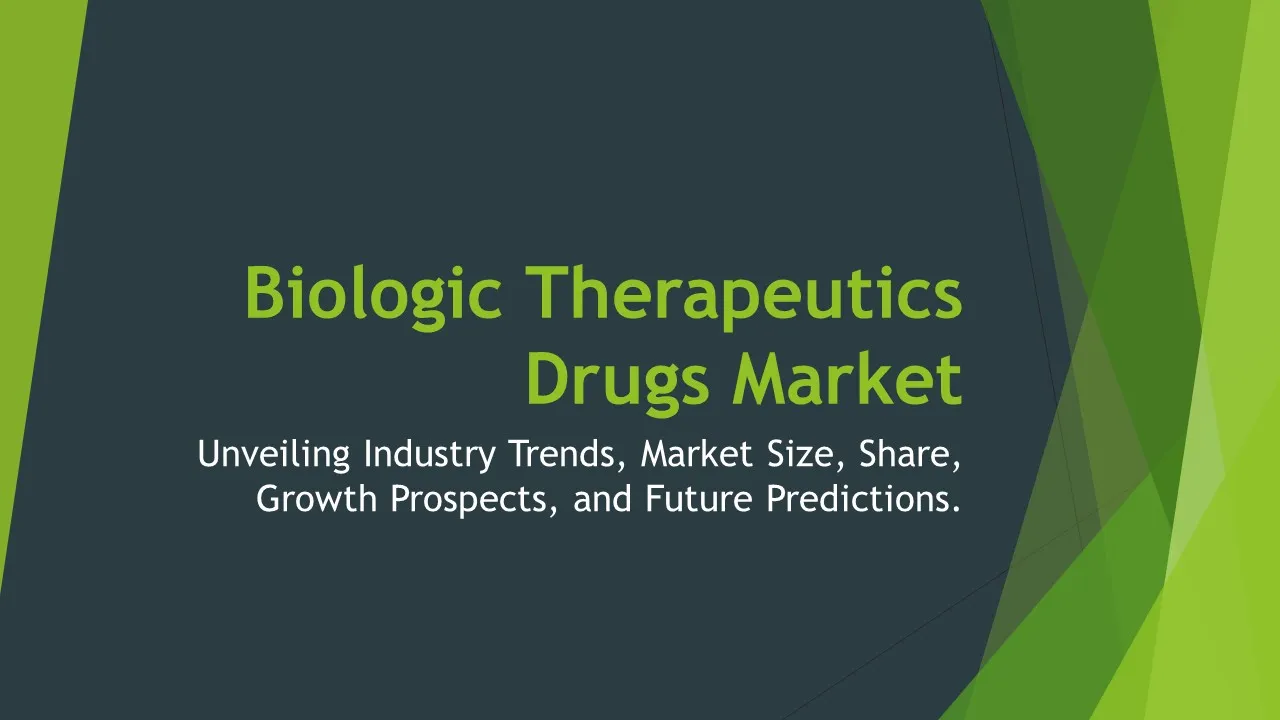Recombinant Human Serum Albumin Sales
Recombinant Human Serum Albumin Market Segments - by Product Type (Liquid Form, Powder Form), Application (Biopharmaceuticals, Cell Culture Media, Medical Devices, Research), Distribution Channel (Direct Sales, Distributor Sales), End-User (Biopharmaceutical Companies, Hospitals & Clinics, Research Institutes), and Region (North America, Europe, Asia Pacific, Latin America, Middle East & Africa) - Global Industry Analysis, Growth, Share, Size, Trends, and Forecast 2025-2035
- Report Preview
- Table Of Content
- Segments
- Methodology
Recombinant Human Serum Albumin Sales Market Outlook
The global Recombinant Human Serum Albumin market is estimated to reach USD 1.5 billion by 2035, with a compound annual growth rate (CAGR) of approximately 8.5% during the forecast period from 2025 to 2035. This robust growth is primarily attributed to the increasing prevalence of chronic diseases, growing demand for biopharmaceuticals, and the expanding applications of recombinant human serum albumin (rHSA) in various sectors such as drug formulation and therapeutics. The versatility of rHSA as a stabilizer and carrier for many therapeutic agents has made it a critical component in the pharmaceutical industry, thus driving market demand. Additionally, advancements in biotechnology and the growing investments in research and development are likely to further fuel market growth. The ongoing trends towards personalized medicine and the increasing focus on novel drug delivery systems are also expected to enhance the demand for rHSA in the coming years.
Growth Factor of the Market
The Recombinant Human Serum Albumin market is poised for significant growth owing to several key factors. One of the primary drivers is the rising global incidence of chronic illnesses such as liver disease, kidney disorders, and various types of cancer, which necessitate the use of biopharmaceuticals that often require rHSA as an essential component. Furthermore, the expanding biopharmaceutical sector, which has witnessed exponential growth due to innovations in drug development, is a major contributor to the increased demand for rHSA. The features of rHSA, including its ability to enhance drug solubility and stability, are particularly appealing to pharmaceutical companies. Moreover, with the advancements in cell culture technologies, rHSA is increasingly being utilized in cell culture media, thus broadening its application scope. The increasing adoption of rHSA in the development of vaccines and therapeutics also presents lucrative opportunities for market expansion.
Key Highlights of the Market
- The market is anticipated to experience a CAGR of 8.5% from 2025 to 2035.
- North America holds a significant share, accounting for approximately 40% of the total market revenue.
- Liquid Form of rHSA is expected to dominate the Product Type segment due to its ease of use.
- Biopharmaceuticals emerged as the leading Application segment, given the growing demand for biologic drugs.
- The presence of numerous biopharmaceutical companies and research institutions enhances market dynamics.
By Product Type
Liquid Form:
The Liquid Form of recombinant human serum albumin (rHSA) is anticipated to dominate the market due to its significant advantages in terms of ease of administration and stability. The liquid formulation is often preferred in clinical settings for its convenience, as it can be directly administered without the need for reconstitution, thus saving time during critical medical procedures. Additionally, the liquid form ensures better bioavailability of drugs when used as a stabilizing agent or carrier in drug formulations. The growing trend towards hospitals and clinics opting for ready-to-use solutions further complements the demand for liquid rHSA. Furthermore, advancements in technology have improved the quality and shelf-life of liquid rHSA, making it a reliable choice for healthcare providers.
Powder Form:
The Powder Form of recombinant human serum albumin is also gaining traction, particularly in research and laboratory-based applications. This form allows for extended shelf-life and flexibility in usage, enabling researchers to dissolve it in varying concentrations as required for specific experiments. The powdered format is commonly utilized in biopharmaceutical manufacturing and cell culture processes, where precise measurements are essential. Additionally, the increasing focus on developing novel drug delivery systems is likely to enhance the demand for powdered rHSA, as it can be easily integrated into various formulations. The versatility of powder rHSA makes it a preferred choice for many research institutes and biopharmaceutical companies looking to optimize their production processes.
By Application
Biopharmaceuticals:
The application of recombinant human serum albumin in the biopharmaceutical sector constitutes a significant portion of the overall market. rHSA is widely used as a stabilizer and carrier for biological drugs, thereby enhancing their efficacy and shelf-life. The biopharmaceutical industry is focusing on producing biologics that require careful formulation, making rHSA an integral component in the development of these products. With the increasing approval of biologic drugs and the growing trend towards personalized medicine, the demand for rHSA in this application is expected to witness substantial growth. Furthermore, as the biopharmaceutical sector continues to evolve, the role of rHSA as a crucial ingredient in drug formulation will only expand, providing a conducive environment for market growth.
Cell Culture Media:
Cell culture media is another prominent application for recombinant human serum albumin, where it is used to provide essential nutrients and promote cell growth. The use of rHSA in cell culture media offers a controlled environment that helps maintain the physiological functions of cultured cells, making it indispensable in research and development laboratories. As the demand for cell-based therapies and regenerative medicine escalates, the need for high-quality cell culture media incorporating rHSA is on the rise. The growing emphasis on biotechnological advancements, including vaccine development and cancer research, is further propelling the adoption of rHSA in this application. With advancements in cell culture technologies, the role of rHSA is increasingly recognized as vital for successful cell growth and experimentation.
Medical Devices:
In the medical devices segment, recombinant human serum albumin is employed as a plasma expander and is used in various diagnostic and therapeutic devices. Its biocompatibility and ability to enhance the performance of medical devices make rHSA an attractive choice for manufacturers. The increasing prevalence of chronic diseases requiring advanced medical treatments is driving the demand for innovative medical devices that utilize rHSA as a key component. Furthermore, the focus on improving patient outcomes and safety standards in medical device manufacturing is pushing for the incorporation of high-quality materials like rHSA. As such, the role of rHSA in medical devices is critical, and its importance in ensuring optimal performance and efficacy cannot be understated.
Research:
Recombinant human serum albumin finds extensive application in academic and clinical research, where it is utilized to enhance the quality of experimental outcomes. Researchers employ rHSA as a stabilizer in various assays and experiments to ensure the reliability of results. The rising number of research activities in fields such as oncology, immunology, and pharmacology is expected to boost the demand for rHSA in research applications. Furthermore, as research institutions increasingly focus on developing novel therapeutic approaches, the reliance on high-quality reagents like rHSA becomes paramount. The growth in funding for scientific research and the continuous quest for advancements in medical science will further solidify the standing of rHSA as an essential reagent in research settings.
By Distribution Channel
Direct Sales:
The direct sales channel is a vital segment for the distribution of recombinant human serum albumin, particularly for biopharmaceutical companies and hospitals. This channel allows manufacturers to engage directly with clients, ensuring better communication and tailored solutions to meet specific customer needs. By leveraging direct sales, companies can offer specialized products and provide technical support, enhancing customer satisfaction. Additionally, direct sales facilitate quicker response times for orders and can better manage product availability, which is crucial in the healthcare sector where timely access to rHSA is essential. The trend towards establishing exclusive supply agreements with hospitals and clinics is expected to further bolster the direct sales segment in the coming years.
Distributor Sales:
Distributor sales constitute a significant portion of the market for recombinant human serum albumin, as they provide an efficient means of reaching a broader customer base. Distributors play a crucial role in making rHSA accessible to various end-users, including research institutes and smaller healthcare facilities that may not engage in direct purchases from manufacturers. This distribution channel allows for more extensive market penetration and ensures that rHSA products are available in remote or underserved areas. Furthermore, distributors often offer a range of products, including complementary reagents and supplies, making them a one-stop shop for customers. As the market continues to expand, the importance of distributor sales in enhancing accessibility and reach will remain critical.
By User
Biopharmaceutical Companies:
Biopharmaceutical companies are among the largest users of recombinant human serum albumin, leveraging its properties for various applications in drug development and manufacturing. These companies require high-quality rHSA to ensure the efficacy and stability of their biologics, making it an essential component in their production processes. As the biopharmaceutical industry experiences rapid growth, driven by the increasing demand for biologic therapies, the role of rHSA becomes even more critical. Moreover, with the trend towards personalized medicine and tailored therapeutics, biopharmaceutical companies are likely to invest heavily in the development of innovative products that utilize rHSA, further enhancing its demand in this sector.
Hospitals & Clinics:
Hospitals and clinics represent a significant segment of users for recombinant human serum albumin, primarily utilizing it in therapeutic applications and as a plasma expander. The need for rHSA in clinical settings is driven by its ability to improve patient outcomes, particularly in critical care scenarios. As healthcare providers strive to enhance treatment efficacy and adhere to safety protocols, the demand for rHSA in hospitals and clinics is expected to rise. Additionally, as healthcare systems evolve to adopt more advanced treatment modalities, the reliance on high-quality biological products like rHSA is becoming increasingly important. The growing trend towards personalized patient care will further solidify the role of rHSA in clinical applications.
Research Institutes:
Research institutes are significant users of recombinant human serum albumin, where it is employed in various experimental protocols to enhance research outcomes. rHSA is utilized in assays, cell cultures, and as a stabilizer for biological samples, making it an indispensable reagent in laboratories. The rising focus on biomedical research, particularly in areas such as drug discovery and development, is driving the demand for high-quality reagents like rHSA. Furthermore, as funding for scientific research continues to increase globally, research institutes are likely to invest in advanced reagents, further boosting the market for rHSA. The collaboration between academia and industry in research projects is also expected to create more opportunities for rHSA usage, enhancing its visibility and importance in research settings.
By Region
The regional analysis of the Recombinant Human Serum Albumin market highlights North America as a frontrunner, accounting for about 40% of the global market share. This dominance is attributed to the presence of a robust biopharmaceutical industry, advanced healthcare infrastructure, and substantial investments in research and development. The United States, in particular, boasts a well-established ecosystem for biotechnology and pharmaceuticals, driving the demand for rHSA in various applications. Furthermore, the growing prevalence of chronic diseases in the region necessitates the increased use of biological therapies, further solidifying North America's position. The CAGR for this region is projected at approximately 7.5%, reflecting steady growth outlook in the coming years.
Europe follows closely as a significant player in the Recombinant Human Serum Albumin market, accounting for around 30% of the overall market share. The region benefits from a strong emphasis on research and development, with numerous academic and commercial research institutions dedicated to advancing medical science. Additionally, the increasing focus on innovative drug formulations and personalized medicine is driving the demand for rHSA in Europe. The Asia Pacific region is also witnessing considerable growth, attributed to the rising adoption of advanced biopharmaceutical technologies and the expanding healthcare sector. Collectively, Latin America and the Middle East & Africa hold a smaller market share, but exhibit potential for growth as healthcare infrastructures improve and biopharmaceutical production capabilities expand.
Opportunities
The Recombinant Human Serum Albumin market is poised to benefit significantly from the ongoing advancements in biotechnology and pharmaceuticals. With the increasing demand for biologics and biosimilars, the need for high-quality stabilizers like rHSA will continue to grow. Biopharmaceutical companies are increasingly focusing on developing innovative therapies that require specialized formulations, driving the demand for rHSA in drug development processes. Furthermore, the rise of personalized medicine is creating opportunities for tailored formulations that incorporate rHSA as a critical ingredient. As the landscape of drug discovery continues to evolve, there exists an opportunity for manufacturers to collaborate with biopharmaceutical companies to explore new applications and expand their product offerings. This collaborative approach can lead to the development of novel therapies and broaden the utilization of rHSA across various sectors.
Additionally, the increasing investments in research and development activities across the globe present lucrative opportunities for the Recombinant Human Serum Albumin market. As academic and research institutions embark on innovative projects in fields such as regenerative medicine, vaccine development, and cancer research, the demand for reliable reagents like rHSA is likely to surge. The ongoing trend towards outsourcing research activities to specialized laboratories is also expected to enhance the market dynamics, as it creates a broader customer base for rHSA manufacturers. Moreover, with the focus on improving healthcare outcomes and patient safety, the adoption of rHSA in medical devices and diagnostic tools presents yet another avenue for growth. As these trends develop, the Recombinant Human Serum Albumin market is expected to experience significant expansion over the forecast period.
Threats
Despite the promising growth prospects for the Recombinant Human Serum Albumin market, several threats could hinder its progress. One of the primary concerns is the emergence of alternative products and substitutes that could replace rHSA in various applications. For example, the development of synthetic or plant-based alternatives may offer cost advantages and lead to increased competition in the market. As researchers and manufacturers seek more economical solutions, the presence of these substitutes may negatively impact the demand for rHSA. Additionally, regulatory challenges associated with the approval of biopharmaceuticals and biological products may pose barriers to market entry and expansion. Stringent regulations and compliance requirements could slow down the introduction of new rHSA-based products, affecting the overall market growth.
Furthermore, fluctuations in raw material prices and supply chain disruptions may also represent considerable threats to the Recombinant Human Serum Albumin market. The production of rHSA is highly dependent on the sourcing of quality raw materials, and any disruptions in supply chains can lead to increased production costs and reduced availability. Additionally, geopolitical tensions and trade restrictions could further complicate sourcing and manufacturing processes, impacting the overall market dynamics. Therefore, it becomes crucial for manufacturers to establish robust supply chain strategies and explore alternative sourcing options to mitigate these risks and ensure a steady flow of rHSA products in the market. Addressing these challenges will be essential for sustaining growth and maintaining a competitive edge in the Recombinant Human Serum Albumin market.
Competitor Outlook
- Grifols, S.A.
- Octapharma AG
- CSL Behring
- Fresenius Kabi AG
- Shire PLC
- Takeda Pharmaceutical Company Limited
- Hyaluronic Acid & HA Derivatives
- Bio Products Laboratory Limited
- Kedrion S.p.A.
- Sangamo Therapeutics, Inc.
- Roche Diagnostics
- Merck KGaA
- Ventria Bioscience, Inc.
- Recombinant Protein Technologies
- ProSpec-Tany TechnoGene Ltd.
The competitive landscape of the Recombinant Human Serum Albumin market is characterized by a mix of established players and emerging companies, striving to capitalize on the growing demand for rHSA. Major companies are focusing on strategic partnerships, mergers, and acquisitions to enhance their product portfolios and expand their market reach. For instance, companies like Grifols, S.A. and CSL Behring are actively pursuing collaborations with biopharmaceutical firms to develop innovative therapies that incorporate rHSA. Additionally, these companies are investing in research and development to improve the quality and efficacy of their rHSA products, thereby gaining a competitive edge in the market.
Furthermore, the landscape is also witnessing the entry of new players aiming to capture a share of the growing market. These emerging companies are leveraging advancements in biotechnology to develop novel formulations and applications for rHSA, thereby enhancing competition. The presence of a diverse range of companies fosters innovation and helps drive down prices, creating a more accessible market for consumers. As the demand for rHSA continues to rise, the competitive dynamics are expected to intensify, encouraging both established and new players to innovate and enhance their offerings.
Companies such as Octapharma AG and Takeda Pharmaceutical Company Limited are notable for their comprehensive product ranges and strong distribution networks. Their extensive portfolios often include various forms of rHSA suited for different applications, thereby catering to a wide array of customer needs. Additionally, their established relationships with healthcare providers and research institutions enable them to maintain a strong market presence. The focus on regulatory compliance and quality assurance further enhances their credibility in the market, making them preferred partners for biopharmaceutical companies seeking reliable sources of rHSA.
1 Appendix
- 1.1 List of Tables
- 1.2 List of Figures
2 Introduction
- 2.1 Market Definition
- 2.2 Scope of the Report
- 2.3 Study Assumptions
- 2.4 Base Currency & Forecast Periods
3 Market Dynamics
- 3.1 Market Growth Factors
- 3.2 Economic & Global Events
- 3.3 Innovation Trends
- 3.4 Supply Chain Analysis
4 Consumer Behavior
- 4.1 Market Trends
- 4.2 Pricing Analysis
- 4.3 Buyer Insights
5 Key Player Profiles
- 5.1 Shire PLC
- 5.1.1 Business Overview
- 5.1.2 Products & Services
- 5.1.3 Financials
- 5.1.4 Recent Developments
- 5.1.5 SWOT Analysis
- 5.2 Merck KGaA
- 5.2.1 Business Overview
- 5.2.2 Products & Services
- 5.2.3 Financials
- 5.2.4 Recent Developments
- 5.2.5 SWOT Analysis
- 5.3 CSL Behring
- 5.3.1 Business Overview
- 5.3.2 Products & Services
- 5.3.3 Financials
- 5.3.4 Recent Developments
- 5.3.5 SWOT Analysis
- 5.4 Grifols, S.A.
- 5.4.1 Business Overview
- 5.4.2 Products & Services
- 5.4.3 Financials
- 5.4.4 Recent Developments
- 5.4.5 SWOT Analysis
- 5.5 Octapharma AG
- 5.5.1 Business Overview
- 5.5.2 Products & Services
- 5.5.3 Financials
- 5.5.4 Recent Developments
- 5.5.5 SWOT Analysis
- 5.6 Kedrion S.p.A.
- 5.6.1 Business Overview
- 5.6.2 Products & Services
- 5.6.3 Financials
- 5.6.4 Recent Developments
- 5.6.5 SWOT Analysis
- 5.7 Fresenius Kabi AG
- 5.7.1 Business Overview
- 5.7.2 Products & Services
- 5.7.3 Financials
- 5.7.4 Recent Developments
- 5.7.5 SWOT Analysis
- 5.8 Roche Diagnostics
- 5.8.1 Business Overview
- 5.8.2 Products & Services
- 5.8.3 Financials
- 5.8.4 Recent Developments
- 5.8.5 SWOT Analysis
- 5.9 Ventria Bioscience, Inc.
- 5.9.1 Business Overview
- 5.9.2 Products & Services
- 5.9.3 Financials
- 5.9.4 Recent Developments
- 5.9.5 SWOT Analysis
- 5.10 Sangamo Therapeutics, Inc.
- 5.10.1 Business Overview
- 5.10.2 Products & Services
- 5.10.3 Financials
- 5.10.4 Recent Developments
- 5.10.5 SWOT Analysis
- 5.11 ProSpec-Tany TechnoGene Ltd.
- 5.11.1 Business Overview
- 5.11.2 Products & Services
- 5.11.3 Financials
- 5.11.4 Recent Developments
- 5.11.5 SWOT Analysis
- 5.12 Bio Products Laboratory Limited
- 5.12.1 Business Overview
- 5.12.2 Products & Services
- 5.12.3 Financials
- 5.12.4 Recent Developments
- 5.12.5 SWOT Analysis
- 5.13 Hyaluronic Acid & HA Derivatives
- 5.13.1 Business Overview
- 5.13.2 Products & Services
- 5.13.3 Financials
- 5.13.4 Recent Developments
- 5.13.5 SWOT Analysis
- 5.14 Recombinant Protein Technologies
- 5.14.1 Business Overview
- 5.14.2 Products & Services
- 5.14.3 Financials
- 5.14.4 Recent Developments
- 5.14.5 SWOT Analysis
- 5.15 Takeda Pharmaceutical Company Limited
- 5.15.1 Business Overview
- 5.15.2 Products & Services
- 5.15.3 Financials
- 5.15.4 Recent Developments
- 5.15.5 SWOT Analysis
- 5.1 Shire PLC
6 Market Segmentation
- 6.1 Recombinant Human Serum Albumin Sales Market, By User
- 6.1.1 Biopharmaceutical Companies
- 6.1.2 Hospitals & Clinics
- 6.1.3 Research Institutes
- 6.2 Recombinant Human Serum Albumin Sales Market, By Application
- 6.2.1 Biopharmaceuticals
- 6.2.2 Cell Culture Media
- 6.2.3 Medical Devices
- 6.2.4 Research
- 6.3 Recombinant Human Serum Albumin Sales Market, By Product Type
- 6.3.1 Liquid Form
- 6.3.2 Powder Form
- 6.4 Recombinant Human Serum Albumin Sales Market, By Distribution Channel
- 6.4.1 Direct Sales
- 6.4.2 Distributor Sales
- 6.1 Recombinant Human Serum Albumin Sales Market, By User
7 Competitive Analysis
- 7.1 Key Player Comparison
- 7.2 Market Share Analysis
- 7.3 Investment Trends
- 7.4 SWOT Analysis
8 Research Methodology
- 8.1 Analysis Design
- 8.2 Research Phases
- 8.3 Study Timeline
9 Future Market Outlook
- 9.1 Growth Forecast
- 9.2 Market Evolution
10 Geographical Overview
- 10.1 Europe - Market Analysis
- 10.1.1 By Country
- 10.1.1.1 UK
- 10.1.1.2 France
- 10.1.1.3 Germany
- 10.1.1.4 Spain
- 10.1.1.5 Italy
- 10.1.1 By Country
- 10.2 Asia Pacific - Market Analysis
- 10.2.1 By Country
- 10.2.1.1 India
- 10.2.1.2 China
- 10.2.1.3 Japan
- 10.2.1.4 South Korea
- 10.2.1 By Country
- 10.3 Latin America - Market Analysis
- 10.3.1 By Country
- 10.3.1.1 Brazil
- 10.3.1.2 Argentina
- 10.3.1.3 Mexico
- 10.3.1 By Country
- 10.4 North America - Market Analysis
- 10.4.1 By Country
- 10.4.1.1 USA
- 10.4.1.2 Canada
- 10.4.1 By Country
- 10.5 Middle East & Africa - Market Analysis
- 10.5.1 By Country
- 10.5.1.1 Middle East
- 10.5.1.2 Africa
- 10.5.1 By Country
- 10.6 Recombinant Human Serum Albumin Sales Market by Region
- 10.1 Europe - Market Analysis
11 Global Economic Factors
- 11.1 Inflation Impact
- 11.2 Trade Policies
12 Technology & Innovation
- 12.1 Emerging Technologies
- 12.2 AI & Digital Trends
- 12.3 Patent Research
13 Investment & Market Growth
- 13.1 Funding Trends
- 13.2 Future Market Projections
14 Market Overview & Key Insights
- 14.1 Executive Summary
- 14.2 Key Trends
- 14.3 Market Challenges
- 14.4 Regulatory Landscape
Segments Analyzed in the Report
The global Recombinant Human Serum Albumin Sales market is categorized based on
By Product Type
- Liquid Form
- Powder Form
By Application
- Biopharmaceuticals
- Cell Culture Media
- Medical Devices
- Research
By Distribution Channel
- Direct Sales
- Distributor Sales
By User
- Biopharmaceutical Companies
- Hospitals & Clinics
- Research Institutes
By Region
- North America
- Europe
- Asia Pacific
- Latin America
- Middle East & Africa
Key Players
- Grifols, S.A.
- Octapharma AG
- CSL Behring
- Fresenius Kabi AG
- Shire PLC
- Takeda Pharmaceutical Company Limited
- Hyaluronic Acid & HA Derivatives
- Bio Products Laboratory Limited
- Kedrion S.p.A.
- Sangamo Therapeutics, Inc.
- Roche Diagnostics
- Merck KGaA
- Ventria Bioscience, Inc.
- Recombinant Protein Technologies
- ProSpec-Tany TechnoGene Ltd.
- Publish Date : Jan 21 ,2025
- Report ID : PH-67721
- No. Of Pages : 100
- Format : |
- Ratings : 4.5 (110 Reviews)









